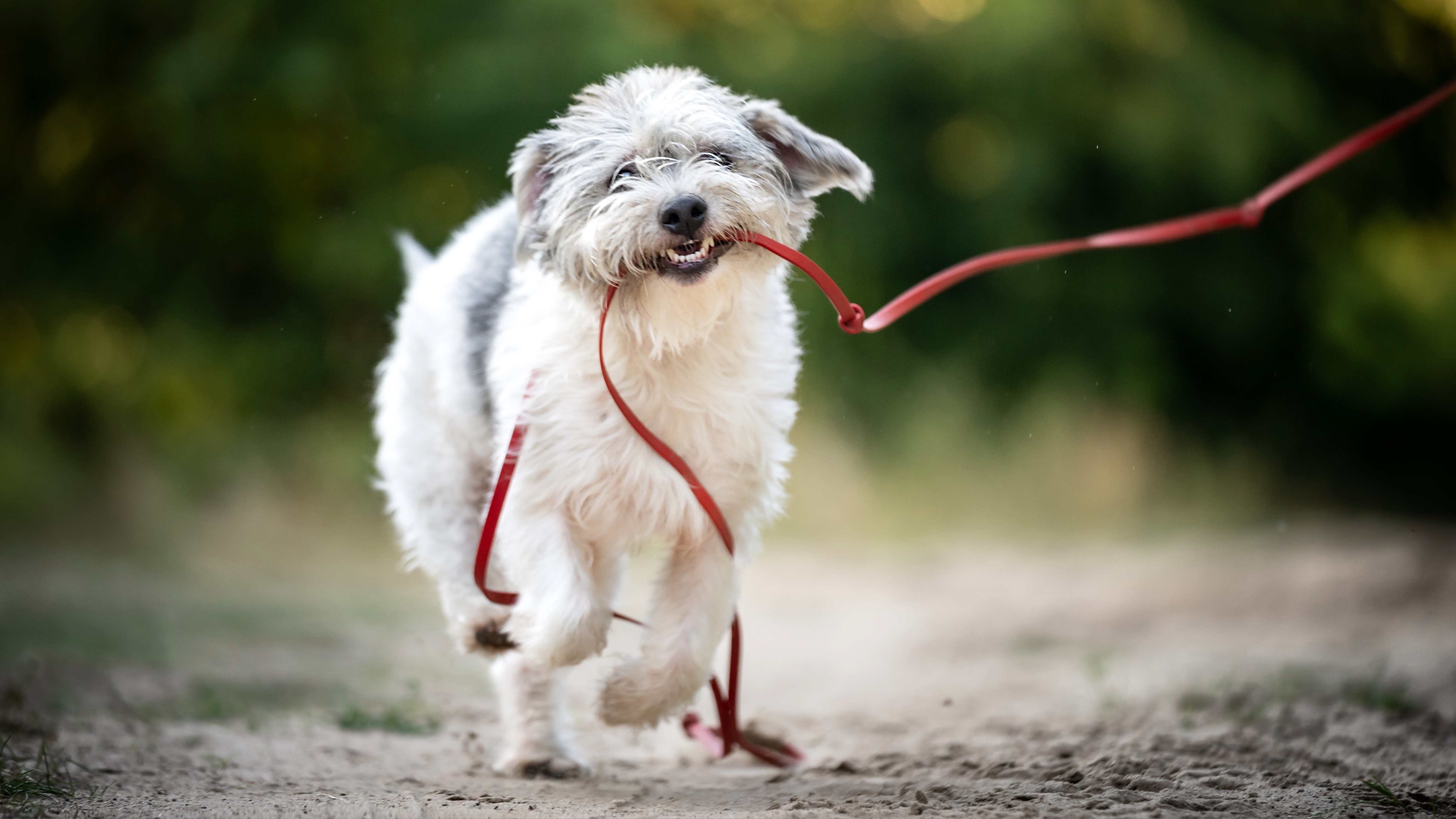
Walking on a long leash is a skill that’s important for dogs to learn. In situations when it’s not appropriate or safe for your dog to be off their lead, a long leash gives your pup some freedom to explore and sniff without being by your side, but it means they aren’t left to their devices completely.
But how can you train your dog to walk on one of the best dog leashes properly, particularly if it’s a long leash? Well, Ella Camps-Linney and Alistair Mackenzie, the co-owners of Kirby Dog Training, have shared a few things that can help with loose-leash walking training in a recent Instagram post. Let’s take a closer look…
Pasha used to be reinforced much more frequently when he was learning to keep the leash slack at first (every couple of steps initially!),” say Camps-Linney and Mackenzie about their own dog, “But we’ve built up some nice duration and distance between treats now.”
“Practice lead mechanics and reward placement at home first,” they recommend, while they also advise that you should make sure all your dog’s needs are met before you make a start on loose-leash walking.
If there’s a little tension on the leash, they advise luring your pup back to your side and starting again. Make sure you’ve brought plenty of treats with you, too, and hand them out generously when they’re walking by your side, or when the leash is slack – here’s how to stop a dog pulling on a leash for more advice.
Remember, too, that it’s important to let your dog stop and sniff. Our dogs have extremely powerful noses and sense of smell – much more than ours – and sniffing is how they make sense of their world. So, it’s a good idea to let them sniff around when they want to. “Reward generously when they look up at you,” Camps-Linney and Mackenzie add, so when your dog stops sniffing and acknowledges you again, be sure to grab one of the best dog treats (or two!)
And try to use different ways to reward, if you can. Sure, you can give your pup treats directly into their mouth, but you can mix it up, too. Why not roll them on the floor, or give them the chance to try catching treats?
The final thing to consider, according to Camps-Linney and Mackenzie, is equipment differentiation. “Pasha uses back-clip harness for loose-leash walking practice and front-clip for non-training sessions,” they explain.
If loose-leash walking is something you’re struggling with, here are three of the most common loose-leash walking mistakes (and how to fix them).







